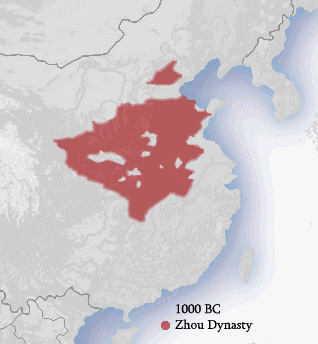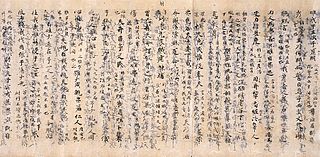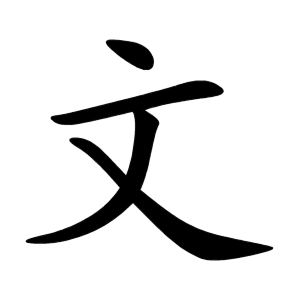Related Research Articles

The 7th century BC began the first day of 700 BC and ended the last day of 601 BC.
The 8th century BC started the first day of 800 BC and ended the last day of 701 BC. The 8th century BC was a period of great change for several historically significant civilizations. In Egypt, the 23rd and 24th dynasties lead to rule from Kingdom of Kush in the 25th Dynasty. The Neo-Assyrian Empire reaches the peak of its power, conquering the Kingdom of Israel as well as nearby countries.

The Zhou dynasty was a royal dynasty of China that existed for 789 years from c. 1046 BC until 256 BC, the longest of such reign in Chinese history. During the Western Zhou period, the royal house, surnamed Ji, had military control over ancient China. Even as Zhou suzerainty became increasingly ceremonial over the following Eastern Zhou period (771–256 BC), the political system created by the Zhou royal house survived in some form for several additional centuries. A date of 1046 BC for the Zhou's establishment is supported by the Xia–Shang–Zhou Chronology Project and David Pankenier, but David Nivison and Edward L. Shaughnessy date the establishment to 1045 BC.

The Shang dynasty, also known as the Yin dynasty, was a Chinese royal dynasty that ruled in the Yellow River valley during the second millennium BC, traditionally succeeding the Xia dynasty and followed by the Western Zhou dynasty. The classic account of the Shang comes from texts such as the Book of Documents, Bamboo Annals and Records of the Grand Historian. Modern scholarship dates the dynasty between the 16th and 11th centuries BC, with more agreement surrounding the end date than beginning date.
This article concerns the period 779 BC – 770 BC.

劉 / 刘 is an East Asian surname. pinyin: Liú in Mandarin Chinese, Lau4 in Cantonese. It is the family name of the Han dynasty emperors. The character 劉 originally meant 'battle axe', but is now used only as a surname. It is listed 252nd in the classic text Hundred Family Surnames. Today, it is the 4th most common surname in mainland China as well as one of the most common surnames in the world.
The Western Zhou was a period of Chinese history corresponding roughly to the first half of the Zhou dynasty. It began when King Wu of Zhou overthrew the Shang dynasty at the Battle of Muye and ended in 771 BC when Quanrong pastoralists sacked the Zhou capital at Haojing and killed King You of Zhou. The "Western" label for the period refers to the location of the Zhou royal capitals, which were clustered in the Wei River valley near present-day Xi'an.
Zhou may refer to:

King You of Zhou, personal name Ji Gongsheng, was a king of the Chinese Zhou dynasty and the last from the Western Zhou dynasty. He reigned from 781 to 771 BC.

King Ping of Zhou, personal name Ji Yijiu, was the thirteenth king of China's Zhou dynasty and the first of the Eastern Zhou dynasty.
King Zhending of Zhou, personal name Ji Jie, was a king of the Chinese Zhou dynasty. He ruled between 468 BC and 441 BC.

The Book of Documents, or the Classic of History, is one of the Five Classics of ancient Chinese literature. It is a collection of rhetorical prose attributed to figures of ancient China, and served as the foundation of Chinese political philosophy for over two millennia.

Guanzhong region, also known as the Guanzhong Basin, Wei River Basin, or uncommonly as the Shaanzhong region, is a historical region of China corresponding to the crescentic graben basin within present-day central Shaanxi, bounded between the Qinling Mountains in the south, and the Huanglong Mountain, Meridian Ridge and Long Mountain ranges in the north. The central flatland area of the basin, known as the Guanzhong Plain, is made up of alluvial plains along the lower Wei River and its numerous tributaries and thus also called the Wei River Plain. The region is part of the Jin-Shaan Basin Belt, and is separated from its geological sibling — the Yuncheng Basin to its northeast — by the Yellow River section southwest of the Lüliang Mountains and north of the river's bend at the tri-provincial junction among Shaanxi, Shanxi and Henan.

Jī was the ancestral name of the Zhou dynasty which ruled China between the 11th and 3rd centuries BC. Thirty-nine members of the family ruled China during this period while many others ruled as local lords, lords who eventually gained great autonomy during the Spring and Autumn and Warring States periods. Ji is a relatively uncommon surname in modern China, largely because its bearers often adopted the names of their states and fiefs as new surnames.
Nangong Kuo was a top official of King Wen of Zhou during the late Shang and early Western Zhou dynasties. In the "Jun Shi" (君奭) chapter of the Classic of History, the Duke of Zhou names him as one of the five key advisers of King Wen, together with Guo Shu, Hong Yao, Tai Dian, and San Yisheng. After King Wen's death, Nangong Kuo became a key adviser of his son King Wu.

Wen is the pinyin romanisation of the Chinese surname 文 (Wén).
The Marquess of Shen was a Qiang ruler of the ancient Chinese state of Shen during Ancient China's Zhou dynasty. An important vassal state responsible for guarding the western Guanzhong region against Xirong incursions, Shen state roughly covered the area of modern-day Mei County in Shanxi province.

Wén and wǔ are a conceptual pair in Chinese philosophy and political culture describing opposition and complementarity of civil and military realms of government. Differentiation between wen and wu was engaged in discussions on criminal punishment, administrative control, creation and reproduction of social order, education and moral transformation.

The Eastern Zhou is a period in Chinese history comprising the latter half of the Zhou dynasty following the Zhou capital's relocation eastward to Chengzhou, near present-day Luoyang. The Eastern Zhou was characterised by the weakened authority of the Zhou royal house. It is subdivided into two parts: the Spring and Autumn period, during which the ancient aristocracy still held power in a large number of separate polities, and the Warring States period, which saw the consolidation of territory and escalation of interstate warfare and administrative sophistication.
顏 is a Chinese surname. It is known as Gan in Hokkien, Ngan in Cantonese, Nhan in Vietnamese and An in Korean.